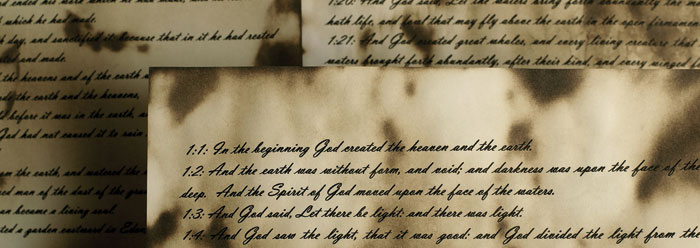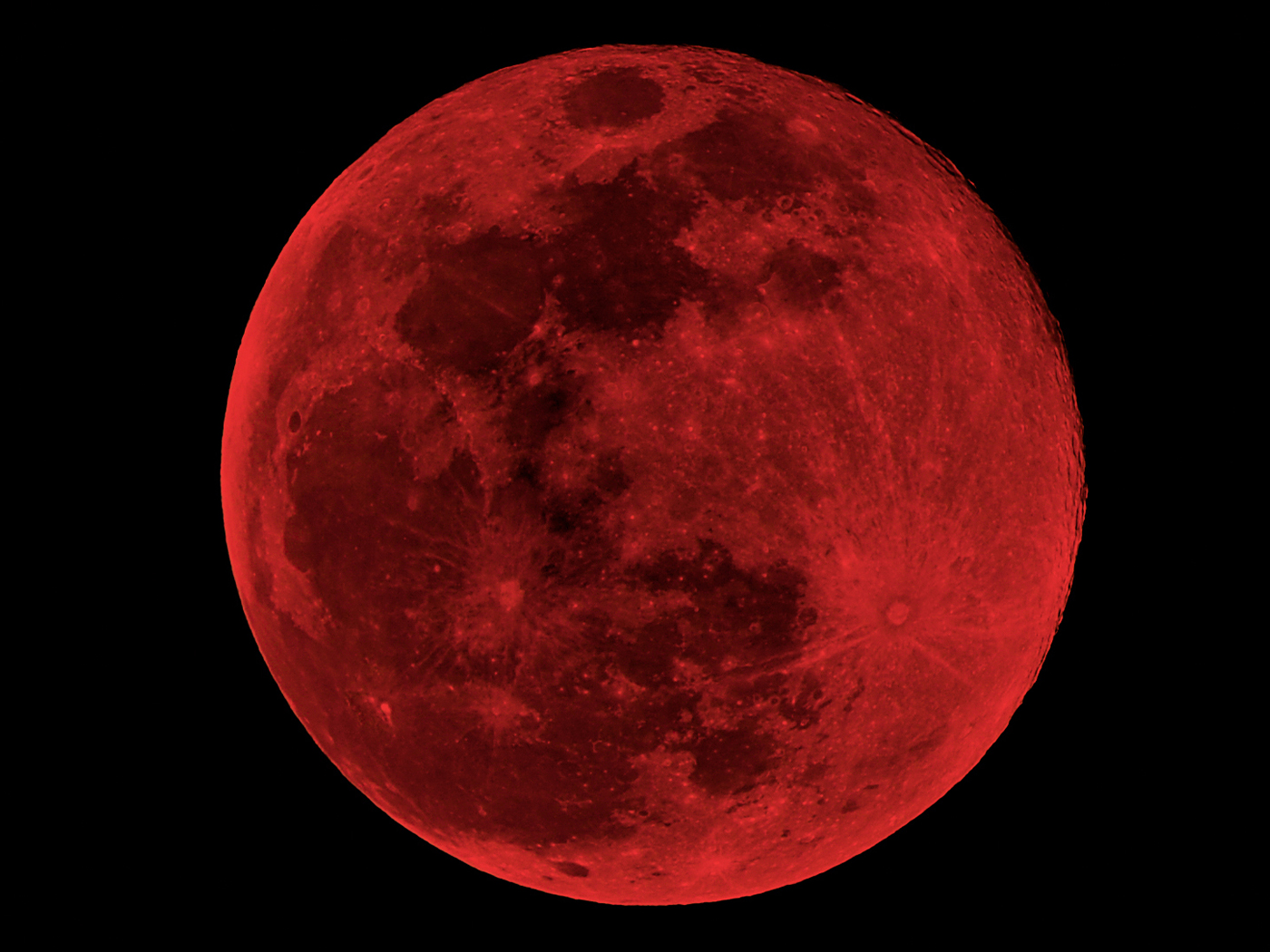"Why are you guys so literalistic about Genesis? Don’t you know that it’s just Hebrew poetry? There’s no need to treat it like real history!" This was the smug comment of a young English literature teacher at a recent Christian educators’ conference where the Institute for Creation Research was conducting seminars. What followed was an energetic discussion that exposed hidden assumptions and misinformation about what Hebrew poetry is and is not.
The bottom line is that Genesis is not "Hebrew poetry." Genesis is Hebrew narrative prose. In other words, Genesis is a record of accurate, true history. Not mysticism. Not mystery. Not myth. Anyone who can read a Bible can prove that Genesis is not Hebrew poetry. And this is not a minor issue, because Paul hung his theology of our salvation in Christ upon the historicity of the Genesis record (Romans 5:12-21).
What Hebrew poetry is and is not.
In order to understand why the young English teacher was wrong, we must first recognize that English poetry and Hebrew poetry are different. The difference is not like comparing apples and oranges; the difference is more like contrasting apples and aardvarks.
English poetry is defined by its verbal "hardware," with the delivery of its pronounced sounds identifying the text as poetry. Hebrew poetry, however, is defined by its "software," its verbal information and meaning, which is presented with parallelism of thought, not sound.
In short, Hebrew poetry is defined by parallelism in meaning, whereas English poetry is defined by the format of verse and sound (such as rhyme and meter). This is easier to illustrate than to explain. Consider the below examples of both kinds of poetry.
Example of English poetry, using a limerick rhyme and meter format.
Some Get a "Bang" Out of Fables
The Bible, to read, some are able,
Yet prefer to read a false fable;
Though God’s Word says "six days,"
A "Big Bang" gets their praise,
Their doctrine, therefore, is unstable.1
Verses of English poetry routinely rely on rhyme. In limerick poems, the rhyme pattern is AA, BB, A (because able, fable, and unstable all rhyme, as do days and praise). Other poems often use other patterns, but almost without exception some kind of rhyme is used to identify English verse-based literature as poetry.
English poetry, being dominated by sound, also relies on meter, the rhythmic "beat" of a poem. The number of stressed syllables in all A lines should match, as should those in the B lines. One English tradition uses iambic pentameter, employed by English poets John Donne, William Shakespeare, and John Milton.2 Note that rhyme and rhythm neither provide nor depend upon a poem’s meaning.
Unlike the rhyme and rhythm of English poetry, Hebrew poetry is defined by informational parallelism…parallelism of meaning.3 The paralleled thoughts may emphasize good and bad, wise and unwise, reverent and blasphemous. They may or may not recount historical events, although time and place, if mentioned at all, are less emphasized than in narrative prose. This informational parallelism―using comparative lines and phrases―portrays similarities and/or contrasts, or comparisons of whole and part, or some other kind of logical associations of meaning.
Knowing this linguistic trait helps us to correctly read biblical Hebrew poetry. Since such poetry requires complementation of meaning (not sound), both halves of a verbal parallelism must be reviewed together as a complementary unit in order to understand fully what either half means, as well as to understand how they complement each other in meaning. Almost always the paralleled lines come in pairs,4 but sometimes a triplet is used.5
Major examples of Hebrew poetry in the Old Testament are Psalms, Proverbs, Lamentations, and Song of Solomon…but not Genesis.
Example of Hebrew poetry, illustrating parallelisms of both similarity and contrast.
Psalm 104:29 Thou hidest thy face, they are troubled:
thou takest away their breath, they die, and return to their dust.
Psalm 104:30 Thou sendest forth thy spirit, they are created:
and thou renewest the face of the earth.
Note how both lines in verse 29 show parallel similarity of meaning, as do both lines in verse 30. Yet verse 29 informationally contrasts with verse 30…verse 29 tells how God controls the death of certain creatures (like leviathan, mentioned in verse 26), but verse 30 tells how God controls the life of His creatures. In order to get the full meaning of either verse 29 or verse 30, the total parallelism must be appreciated. This is the hallmark of Hebrew poetry.
For another example, read any chapter in Proverbs. They are dominated by parallelism of meaning, verse after verse. Sometimes the parallelism spreads over consecutive verses, as in Proverbs 28:15-16 ("wicked ruler" in verse 15; "the prince" who is a "great oppressor" in verse 16). Sometimes the parallelism is condensed within one verse, as in Proverbs 28:28 ("when the wicked rise, men hide themselves: but when they perish, the righteous increase"). Parallelism dominates the informational structure of Hebrew poetry. Careful reading cannot miss it.
Example of Genesis history, exhibiting the format of narrative prose.
And Cain talked to Abel his brother: and it came to pass, when they were in the field, that Cain rose up against Abel his brother, and slew him. And the Lord said unto Cain, Where is Abel thy brother? And he said, I know not: Am I my brother’s keeper? And he said, What hast thou done? The voice of thy brother’s blood crieth unto me from the ground. And now art thou cursed from the earth, which hath opened her mouth to receive thy brother’s blood from thy hand. (Genesis 4:8-11)
There is no informational parallelism in this passage. What we read is history, a narrative account of the first instance of an unbeliever tragically persecuting a believer, a terrible precedent, a hate crime that preceded millions of later copycat martyrdoms. It’s a sad history (except that Abel went to heaven).
There is no poetic parallelism anywhere in Genesis 4, with the possible exception of the wicked "song" of Lamech the polygamist recorded in Genesis 4:23-24. Nor is there any poetic parallelism in Genesis 1, 2, 3, or any other chapter in Genesis. Why? Because Genesis is history. Virtually all of Genesis illustrates what we expect from historical narrative: careful attention to sequenced events (this occurred, then this occurred, then this occurred, etc.), as well as inclusion of time-and-space context information (when such is relevant to the narrative) and a noticeable absence of Hebrew parallelism.6
Conclusion: No meaning-based parallelism structures the sentences in Genesis.
The sentences in Genesis read like narrative history (i.e., prose), not informational parallelism (poetry). But the "elephant in the room" question is: Why would anyone even pretend that Genesis 1-11, or any part of Genesis, is Hebrew poetry?
For those who know better, it is intellectual dishonesty to avoid the obvious truth that Genesis is real history. Their most likely motive is a desire to accommodate evolutionary mythology by discounting the real history of our origins, stealing credit from Christ so that a fable called "natural selection" can be credited with "selecting" (and creating) earth’s creatures.
Some think Genesis is Hebrew poetry because they have been misled by an "expert." Hopefully, this quick summary can clear up any such confusion. But an even simpler test is this: How did Jesus treat Genesis? As real history, just like Paul.7
Genesis 1-11 is easy-to-understand narrative prose. Don’t naïvely fall for the misinformation of a so-called scholar who, because he wants to rationalize his own evolutionary mythology, tries to dissuade you from believing Genesis 1-50 is an inerrantly inspired historical narrative…because that’s exactly what it is. And, as they say, "the rest is history."
References
- Quoting Johnson, J. J. S. The Religion-and-Science Connection Between Pseudônumos and Pseudomarturia: How Special Revelation Describes the Limitations of General Revelation. Paper presented at the annual Southwest regional meeting of the Evangelical Theological Society at The Criswell College, Dallas, Texas, March 27, 2009. Available on www.icr.org.
- Another traditional poetic meter is trochaic tetrameter, used in the German translation of the Finnish national epic Kalevala and later mimicked by American poet Henry Wadsworth Longfellow in his fictional epic Hiawatha. Both Kalevala and Hiawatha also use parallelism, though parallelism is not "required" to be recognized as poetry in German or English. Johnson, J. J. S. Finnish Literature, Language, and Lore. Baltic Heritage Review. April 2006: 5-7, citing Elias Lönnrot, The Kalevala, or Poems of the Kaleva District, translated into English by Francis Peabody Magoun, Jr., (Cambridge: Harvard University Press, 1963), 162-163.
- Robert Lowth is often recognized as clarifying this trait of Hebrew poetry in his Lectures on the Sacred Poetry of the Hebrew, published in 1753.
- For example, Psalm 2:1 compares the raging of "the heathen" with "the people" imagining a vain thing. Likewise, Psalm 2:2 compares the "kings of the earth" setting themselves against the Lord with the "rulers" taking counsel together against the Lord.
- For example, Psalm 1 compares a triplet of "walking" in the counsel of the ungodly with "standing" in the way of sinners and "sitting" in the seat of the scornful.
- Genesis 1-11, as well as 12-50, also routinely uses the vayyaqtil forms (i.e., conjunction-modified verbs that older Hebrew grammars call waw consecutives or waw conversives), an awkward Hebrew language feature that pervades Hebrew narrative prose but not Hebrew poetry. See, e.g., Practico, G. D. and M. V. Van Pelt. 2001. Basics of Biblical Hebrew Workbook. Grand Rapids, MI: Zondervan, 125-134.
- Compare Mark 10:6 with Matthew 15:1-9 and John 5:44-47. See also Romans 5:12-21.
* Dr. Johnson is Associate Professor of Apologetics at the Institute for Creation Research.
Cite this article: Johnson, J. J. S. 2011. Genesis Is History, Not Poetry. Acts & Facts. 40 (6): 8-9.














